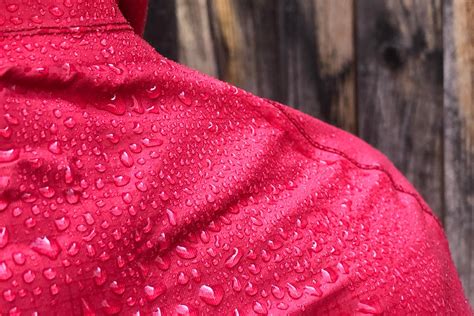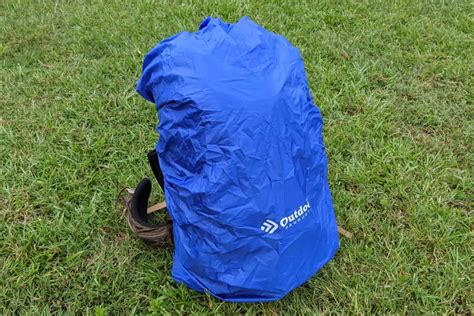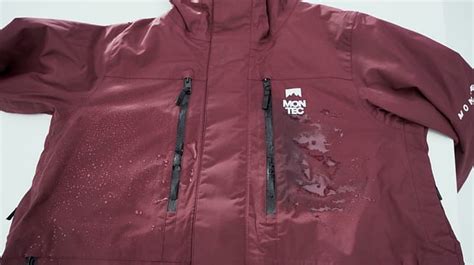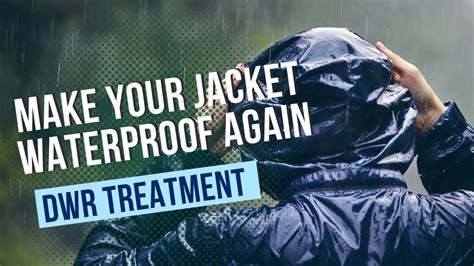Understanding DWR and Its Importance
Durable Water Repellent (DWR) is a crucial treatment applied to the outer fabric of rain shells and other waterproof-breathable gear. It doesn’t make the fabric waterproof; rather, it creates a surface tension that causes water to bead up and roll off, preventing the fabric from ‘wetting out.’ When a fabric wets out, it becomes saturated, which can significantly reduce the garment’s breathability and make you feel damp and cold, even if the underlying waterproof membrane is still intact. Maintaining your DWR is essential for the comfort and performance of your outdoor apparel.

Factors Influencing DWR Lifespan
The “how often” question doesn’t have a single, universal answer because several factors affect how quickly DWR wears off:
- Frequency of Use: The more you wear your rain shell, the faster the DWR will degrade. High-use garments will need more frequent reapplication.
- Abrasion: Backpack straps, rubbing against rocks or vegetation, and even just general movement can wear down the DWR coating. Areas like shoulders, cuffs, and hips often lose DWR faster.
- Dirt and Oils: Grime, body oils, sunscreen, insect repellent, and other contaminants can clog the DWR finish, reducing its effectiveness even if the coating itself isn’t completely gone.
- Washing: While proper washing can reactivate DWR and remove contaminants, using harsh detergents or excessive washing can strip the treatment over time.
- Environmental Exposure: UV light and extreme weather conditions can also contribute to DWR degradation.
Considering these variables, a high-use jacket might need treatment every few months, while a sparingly used one could go a year or more.

Signs It’s Time to Reapply DWR
The most obvious sign is when water stops beading up and starts to “wet out” or soak into the fabric instead. This phenomenon is often called “wet face” or “fabric saturation.” You’ll notice dark, damp patches on the outside of your jacket, even if the inside remains dry thanks to the waterproof membrane. Another indicator is a general feeling of clamminess or reduced breathability, as the saturated outer fabric prevents moisture vapor from escaping.
Before rushing to reapply, first try a thorough cleaning of your garment. Often, dirt and oils are merely masking the DWR’s effectiveness. Washing with a technical gear cleaner (like Nikwax Tech Wash or Granger’s Performance Wash) and then tumble drying on low heat can often reactivate the existing DWR.

The Reapplication Process
If cleaning and heat treatment don’t restore water repellency, it’s time for reapplication. There are two main types of DWR reapplication products:
- Wash-in treatments: These are added to your washing machine. They offer a more even coating but can sometimes reduce the breathability of inner layers or linings if not applied carefully to the outer layer only.
- Spray-on treatments: Applied to a clean, damp garment, these allow for more targeted application, especially useful for high-wear areas or if you only need to treat the outer shell without affecting inner layers.
Always follow the specific instructions on the DWR product you choose. Generally, the steps involve:
- Wash the garment with a technical cleaner to remove all dirt and residues.
- Apply the DWR treatment (either wash-in or spray-on) according to product directions.
- Tumble dry on low heat or air dry as recommended, as heat often helps to bond and activate the DWR to the fabric fibers.

General Guidelines and Maintenance Tips
While there’s no fixed schedule, a good rule of thumb is to assess your DWR every 3-6 months if you’re an active outdoor enthusiast, or at least once a year for less frequent users. Regular inspection and simple maintenance can extend the life of your gear.
- Wash regularly but wisely: Use technical cleaners, not conventional detergents, and wash according to the garment’s care label.
- Spot clean: Address small dirty spots quickly to prevent build-up.
- Avoid fabric softeners: They can clog pores and compromise DWR.
- Store properly: Hang your rain shell in a dry, well-ventilated area away from direct sunlight.
- Test periodically: Pour a little water on the sleeve or shoulder to see if it beads up. If it soaks in, it’s time to act.
By staying vigilant and reapplying DWR when necessary, you’ll ensure your rain shell continues to perform at its best, keeping you dry and comfortable on all your adventures.





